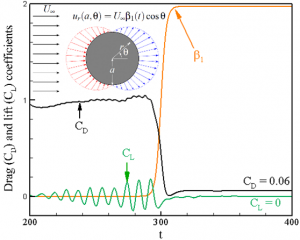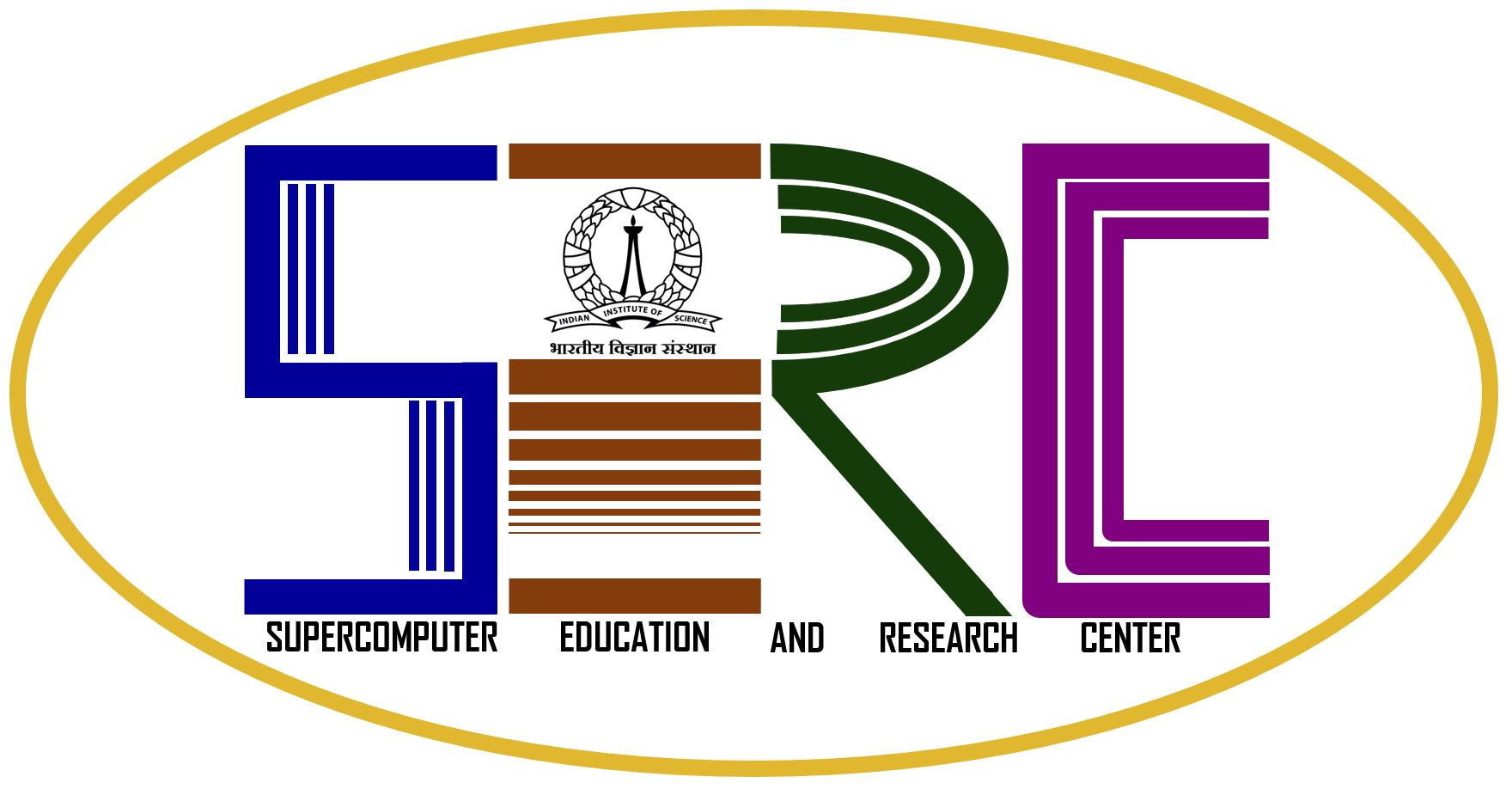
The objective of Prof. Ratnesh Shukla’s Lab of the Mechanical Engineering Department is to develop an advanced understanding of the influence of hydrodynamic slip on the flow and transport characteristics through direct numerical simulations. In 2017, the lab used 26.9 million core hours of SahasraT for the simulations.
Through an effective suppression of vorticity production at the solid surface, hydrodynamic slip is known to enable significant drag reduction over a variety of planar and bluff-body flow configurations. This reduction can lead to substantial power savings in prototypical flow configurations. An understanding of the influence of textured surface enabled slip on flow and transport characteristics is therefore of significant fundamental and technological importance.
Application of wall-normal blowing & suction results in decrease in hydrodynamic loads on a translating circular cylinder. The attached movie shows reduction in the generation of vortical structures and their advection after flow control is activated.
About 7200 cores of Cray ShasraT were used. A high-resolution, MPI-parallelized incompressible flow solver was utilized that relies on high-order accurate compact finite-difference discretization along wall-normal or aperiodic, and Fourier spectral discetization along periodic directions. To achieve high parallel performance, the lab’s implementation employs domain decomposition and an influence matrix technique in a way that minimizes intra-node communication.
“Numerical tests indicate that our high-order accurate flow solver yields excellent scalability up to about ten thousand cores on the CRAY XC-40 computing platform. The problems we are currently simulating using CRAY XC-40 are out of reach of our modest scale computing resources that typically consist of only a few hundred cores.”, remarked Prof. Ratnesh.
Publications
1. N. M. A. Rehman, A. Kumar, and R. K. Shukla, Influence of hydrodynamic slip on convective transport in flow past a circular cylinder, Theoretical and computational fluid dynamics, Vol. 31(3), pp. 251-280.
2. K. S. Patel and R. K. Shukla, Numerical simulation of breakup and detachment of an axially stretching Newtonian liquid bridge with a moving contact line phase field method, Sadhana, Vol. 42(4) pp 467-477.
